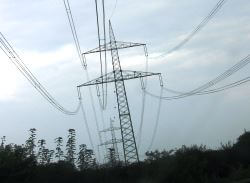 In an interesting aside to the normal cost of energy debate an eyesore has raised eyebrows.
In an interesting aside to the normal cost of energy debate an eyesore has raised eyebrows.
Three main elements have driven the increase in the cost of energy that is the focal point of much angst ahead of the 2015 general election and the findings of the CMA investigation into energy competition in the UK market.
Those elements do not include supplier profiteering, as many might believe, rather they consist of:
- The wholesale energy price
- The cost of renewing and maintaining the energy networks
- The environmental and social obligations of various governments past and present as well as the EU
Indeed, the traditional ‘swing’ cost element of the energy price, the wholesale market, now only constitutes around 50% of the average energy bill, and with the wholesale markets in an far from predictable (relative) slump, the latter two elements are now the ones to watch.
Few would argue with the need to renew the networks and ensure their safe and efficient operation.
In contrast many would question the value of the environmental levies being added to energy users bills.
The assumption had been however that the maintenance we were all paying for was essential for the upkeep of a smooth running network and the need to ensure consistent supply and to avoid black outs.
That however doesn’t now seem to be the whole story.
Instead a far more ephemeral issue is receiving investment. That of replacing electricity pylons with new underground high-voltage transmission cables.
National Grid, the owner of the main pipes and wires networks in the UK has identified 12 sections of power lines for such replacement that cross National parks in Snowdonia, the Peak District, the New Forest and the Brecon Beacons and areas of outstanding natural beauty (AONB) in Dorset, the High Weald, the North Wessex Downs and the Tamar Valley.
Each pylon being removed will cost £7m to replace with underground cables.
Ofgem have deemed the scheme necessary and value for money with £500m being raised through energy bills to fund the project.
That scheme alone is estimated to cost energy users £20 on the average energy bill. And that is assuming the project is delivered on time and in budget.
The cost of carrying cables overhead is only a tenth of burying them, at £2m per KM compared to £22m a KM for underground lines. Note that the proposal is replacement and not a choice between new and additional pylons or buried cables.
Ingrid Samuel, Historic Environment Director at the National Trust said:
“We know it can be a big challenge for modern infrastructure to work in harmony with the landscape but it can be done when people work together to find the best solution.”
And there in lies the crux, “the people” literally are working together to foot the bill of what to any objective eye must seem of peripheral importance in the grand scheme of energy market renewal.
